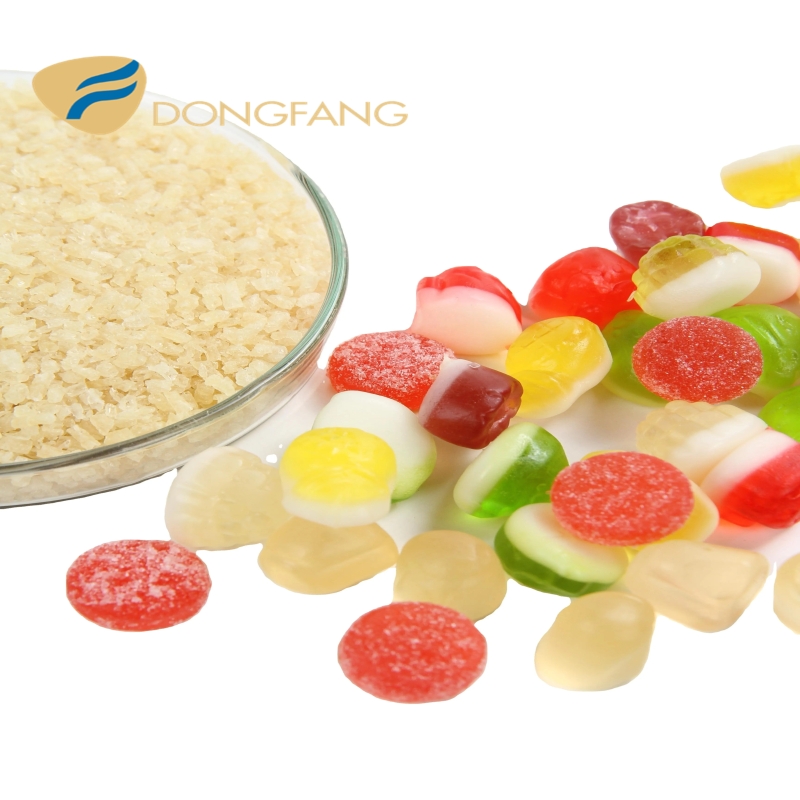-
Categories
-
Pharmaceutical Intermediates
-
Active Pharmaceutical Ingredients
-
Food Additives
- Industrial Coatings
- Agrochemicals
- Dyes and Pigments
- Surfactant
- Flavors and Fragrances
- Chemical Reagents
- Catalyst and Auxiliary
- Natural Products
- Inorganic Chemistry
-
Organic Chemistry
-
Biochemical Engineering
- Analytical Chemistry
- Cosmetic Ingredient
-
Pharmaceutical Intermediates
Promotion
ECHEMI Mall
Wholesale
Weekly Price
Exhibition
News
-
Trade Service
Background informationRecently, Canada and the United States have recalled meat sauces, canned fish and other products that may be contaminated with botulinum, once again arousing everyone's attention to botulinum
.
On the basis of previous interpretations of botulinum contamination in beverages (see http:// for details
), this issue explains the botulinum contamination of meat products
.
2.
Expert interpretation(1) Canned and home-made fermented meat products are foods that are easily contaminated by botulinum toxin
.
Clostridium botulinum is an anaerobic bacteria, which can multiply, generate spores, and produce toxins under hypoxia.
The spores have a certain degree of heat resistance, and botulinum toxin has acid resistance.
Therefore, low-acid canned food (iron cans, iron cans, Glass jars) and home-made sealed preserved foods are foods that are easily contaminated by Clostridium botulinum
.
(2) China has established relevant testing standards for botulinum and its toxins in food
.
In view of the possible harmfulness of botulinum toxin, it has been highly valued worldwide.
The United States and Europe will release epidemiological survey reports on the bacteria every year
.
The United States formulated the Good Manufacturing Practice (GMP) for low-acid food cans in 1973, and implemented strict heat sterilization management on low-acid food cans to reduce the possible risk of botulinum contamination
.
For foods that may be at risk of botulinum contamination such as sealed cans, the microbiological requirements of our country are "should meet commercial sterility", and the corresponding botulinum and botulinum toxin testing method standards and food poisoning diagnostic standards have been formulated
.
(3) Enterprises should take the initiative to recall “foods that may pose risks to consumers” in accordance with the law
.
According to data, the four food recall incidents reported in the United States and Canada were not actions after an outbreak of foodborne diseases caused by botulinum toxin, but after problems and potential risks (possibly botulinum contamination) were discovered during investigation and monitoring.
Voluntary recalls of production enterprises belong to the early warning of food safety risks to the society and the health protection of consumers
.
3.
Expert recommendations(1) Food producers and operators should earnestly abide by China's Food Safety Law and Food Recall Implementation Measures and other relevant regulations, and implement recall responsibilities
.
If a food producer knows that the food it produces and sells is unsafe by means of self-inspection and self-inspection, public complaints and reports, and notifications by operators and regulatory authorities, it shall take the initiative to recall
.
Business operators should cooperate with food producers in their recall work, and unsafe foods caused by their own reasons should be recalled voluntarily within their business scope
.
If it should be voluntarily recalled, but not voluntarily recalled, the supervisory authority can order the recall
.
(2) Consumers should take the initiative to pay attention to the recall information issued by enterprises and regulatory authorities, and do not consume foods included in the recall list to avoid possible food safety risks
.
In addition, self-made fermented foods must pay special attention to the prevention and control of risks.
The choice of raw materials, water, containers, etc.
must be hygienic.
It is best to make small amounts and eat them for a short time
.
Experts in this issue: Liu Xiumei , vice chairman of the Chinese Society for Food Science and Technology, technical consultant and researcher of the National Food Safety Risk Assessment Center,
Wang Shouwei , professor-level senior engineer of the China Meat Research Center,
Xu Xinglian , dean and professor of the College of Food Science and Technology, Nanjing Agricultural University, National Meat Deputy Director of product quality and safety control Engineering Research Center
Chen Shumin China meat Research Center senior engineer
Li Henan China meat Research Center engineerReferences: 1.
http://
2.
http://
3.
ICMSF , Microorganisms in Foods 5: Characteristics of Microbial pathogens, 1996
4.
ICMSF, Microorganisms in Foods 8: Use of Data for Assessing Process Control and Product Acceptance, 2011
5.
"Food Safety Law of the People's Republic of China" revised on April 24, 2015 , Implemented on October 1, 2015
6.
Niu Tiangui, Zhang Baoqin, edited.
Food microbiological inspection[M].
China Metrology Press, 2007.
3:279-280.
7.
Lei Zhiwen, edited.
Meat and meat products microbiological monitoring application manual[ M].
China Standard Press, 2008: 215.
8.
Lin Xiuguang, Kou Yuntong.
Clostridium botulinum and food poisoning[J].
"Food Science", 2003,08(8):194-196.
9.
Merle D Pierson, Leslie A.
Smoot, Michael C.
Robach.
Nitrite, nitrite alternatives, and the control of Clostridium Botulinum in cured meats.
CRC Critical Reviews in Food Science and Nutrition.
Volume 17, Issue 2, 1983
10.
WF Harrigan .
Laboratory Methods in Food Microbiology (Third Edition)[M].
Li Weihua, et al.
Beijing Light Industry Press, 2004.
4:142,207.
11.
Zhao Sijun, Li Xuelian, Cao Xumin, et al.
Research on botulinum toxin and botulinum toxin Progress.
China Animal Quarantine, 2013, 30(8): 36-39, 54.
12.
Li Qingpeng, Lu Jiaping, Jin Jing, et al.
Botox safety incident warning in dairy products.
Journal of Food Safety and Quality Inspection, 2014, 5 (5): 1413-1418.
13.
Silva FVM, Gibbs PA.
Non-proteolytic Clostridium botulinum spores in low-acid cold distributed foods and design of pasteurization processes.
Trends in Food Science & Technology, 2010, 21, 95-105.
14.
Reddy, NR, Skinner, GE, Oh, S.
Clostridium botulinum and its control in low-acid canned foods.
Food Science and Biotechnology, 2006, 15, 499-505.







